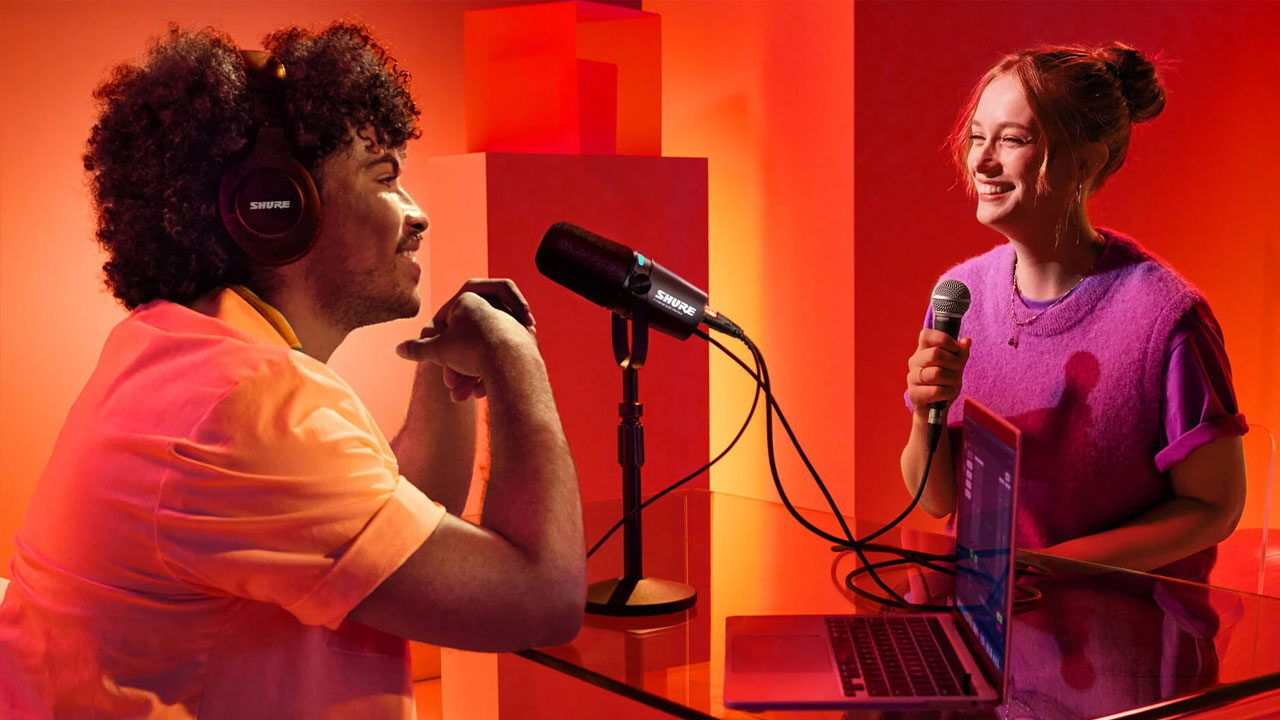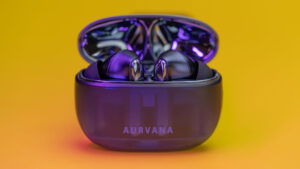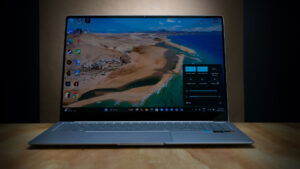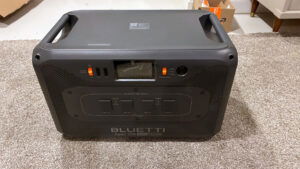If you’ve watched a stream in the past decade, you’ve seen a Shure microphone. The company’s logo alone has become a visual shorthand for “professional content creator.” Shure has earned its reputation over the decades by releasing some of the best-sounding and most iconic microphones on the market. With its newest product, the MV7i, Shure has developed a mobile-friendly, broadcast-quality microphone that, with the help of a cellphone or tablet, can double as a field recorder.
The MV7i is a hybrid USB microphone–digital audio interface. It’s not the first hybrid microphone–interface to hit the market, but it is the first USB mic to include a combination XLR and ¼-inch input. It builds on the studio-grade dynamic microphone and onboard DSP of the venerable MV7+, while transforming its predecessor’s XLR output into a dual-purpose input.
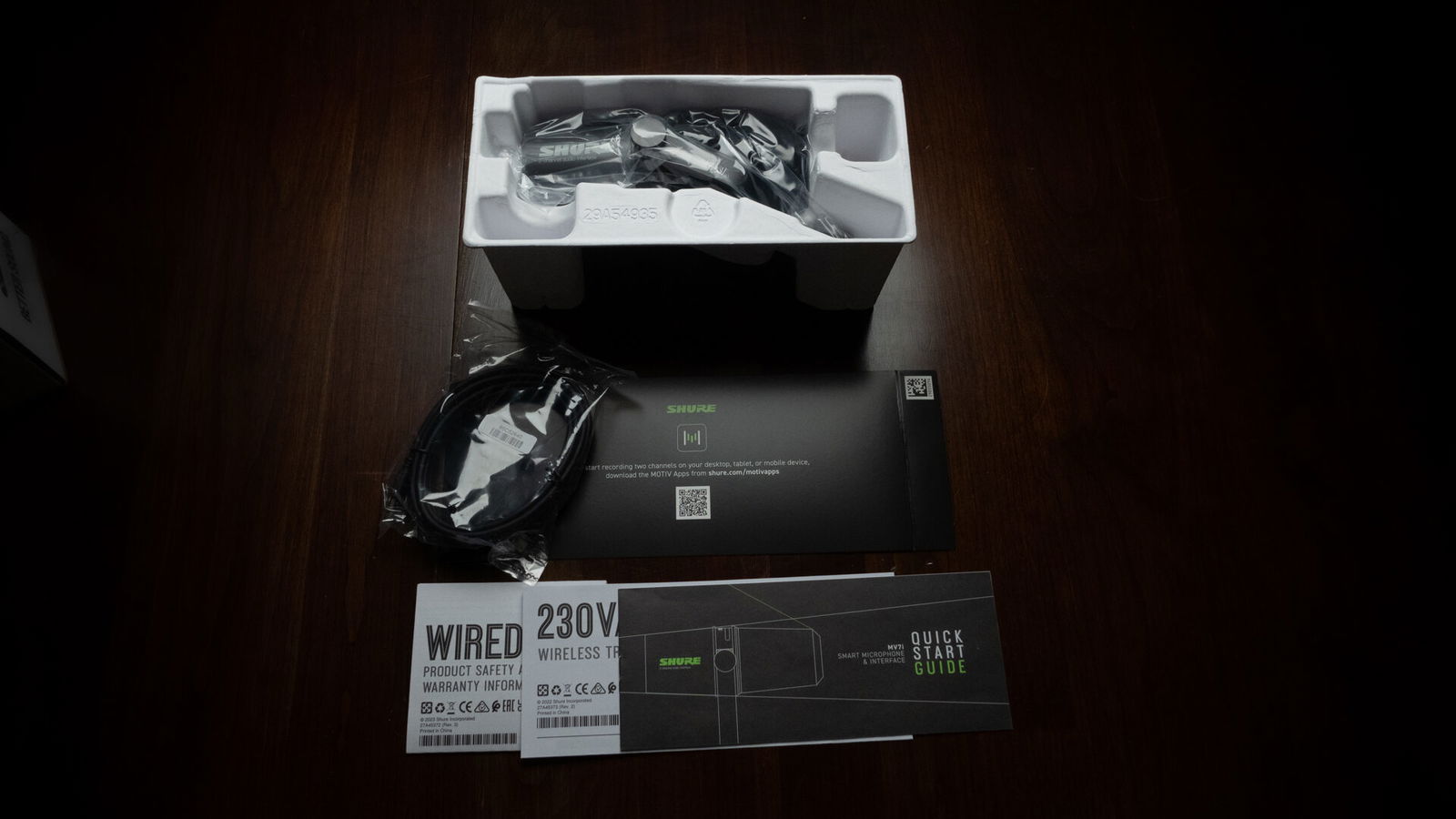
By simply turning an outie into an innie and adding a preamp, Shure has created a one-of-a-kind miniature podcasting studio. At $350, the MV7i is an all-in-one, plug-and-play broadcasting solution that can connect to computers, tablets and smartphones—perfect for small studios and recording on the go. For small teams and solo creators, it’s a must-have.
“At $350, the MV7i is an all-in-one, plug-and-play broadcasting solution that can connect to computers, tablets and smartphones—perfect for small studios and recording on the go.”
On the microphone front, the MV7i uses the same cardioid pattern dynamic capsule as the MV7+, with a 50-16,000 Hz frequency response, 128 dB max SPL, and a 24-bit/48 kHz sampling rate. Meanwhile, on the interface side, the XLR input draws enough power from the USB-C connection to provide 48 V of phantom power—enough to run any dynamic or condenser mic you plug into it. It also provides +60 dB of gain, which, for context, is enough to run Shure’s gain-hungry flagship SM7B microphone without a separate signal-boosting device like a Cloudlifter.
The MV7i sounds great out of the box; however, the only physical control is the tap-to-mute function on the touch LED strip. All other settings must be adjusted in Shure’s Motive Mix app. From the Motive Mix app, users can tune the audio profile of the dynamic microphone as well as the XLR and ¼-inch input. All three can have their gain, tone, reverb, and various noise rejection settings saved to a profile that, once set, becomes the default plug-and-play profile.
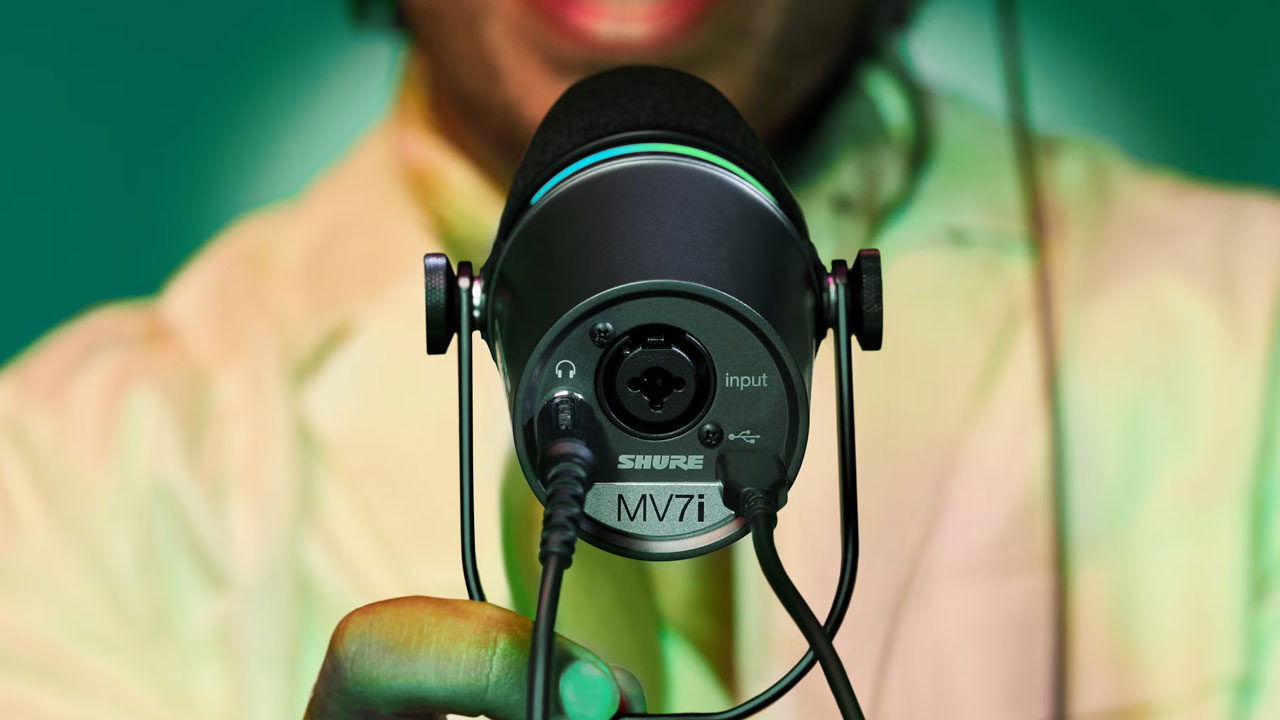
The app also includes a digital source mixer and recorder. The source mixer not only uses the MV7i’s inputs but can also import other mics connected to your device, as well as its desktop audio sources. Recordings can be mixed down and exported as a combined mono file, a set of left and right channel stereo files, or a multi-track project with a separate recording for each source in the mixer.
The source mixer also has a virtual output that can be used as an input source in other software. I did most of my testing by patching the “Motive Virtual Mix” signal into DaVinci Resolve’s Fairlight and Audacity for additional EQ work. Motive Mix isn’t the most robust audio workspace, but its output capabilities make it incredibly powerful for run-and-gun audio production.
Aside from their renowned sound quality, Shure is also known for its incredibly robust designs, and the MV7i is no different. Aside from the foam pop filter and plastic XLR input housing, the MV7i is 1.25 pounds of all-metal construction. So, if running and gunning is your intention, it will survive whatever journey you take it on.
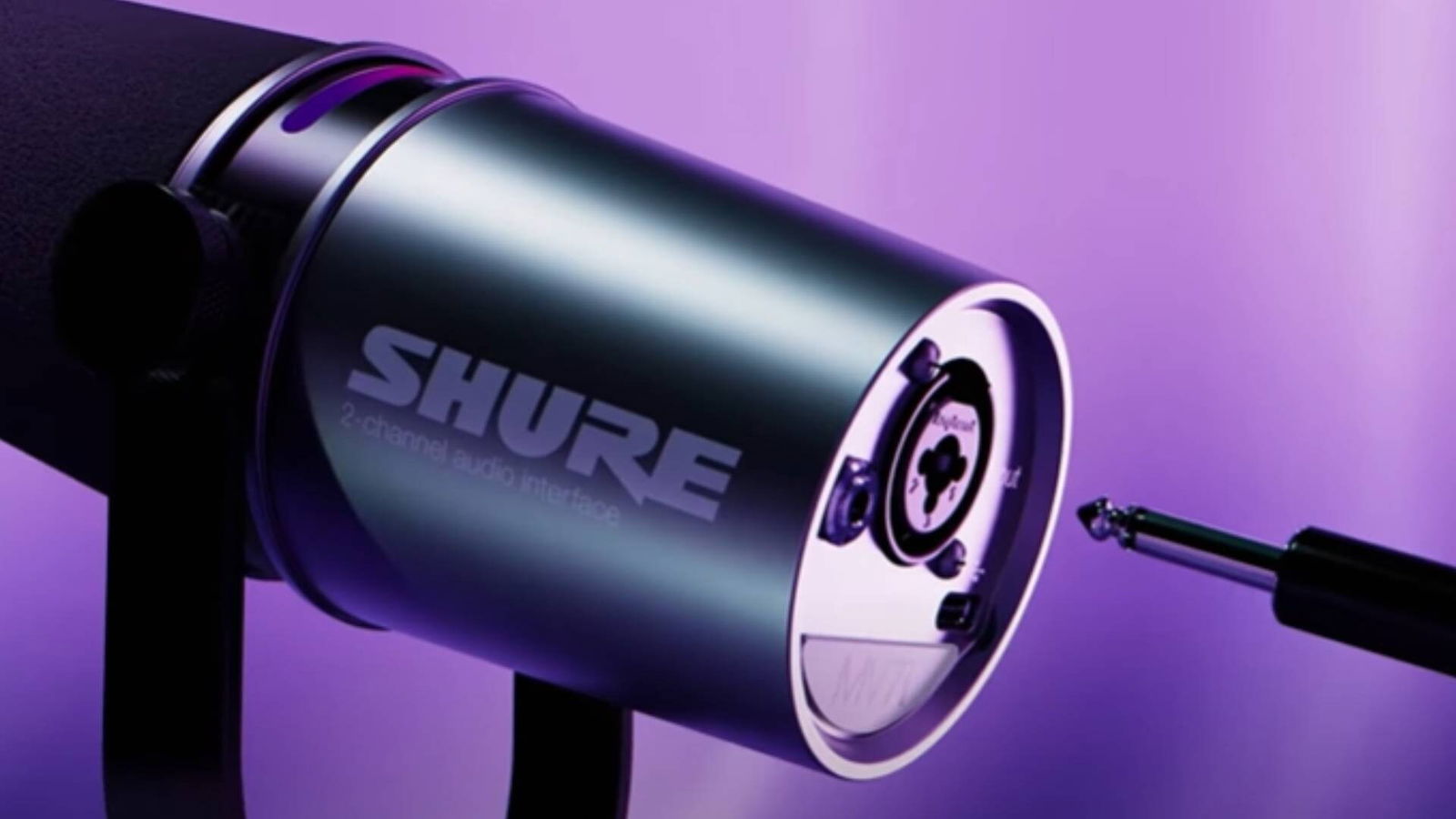
Included with the microphone is a three-metre USB-C to USB-C cable, some documentation, and a surprisingly simple mounting yoke. There’s nothing wrong with the yoke, but it can be finicky. The locking screws loosen regularly, and the four washers that keep each screw in place can be frustrating to reassemble if a screw works itself out entirely. I’d classify this as a nitpick, but the yoke’s loose screws did cause the mic body to droop and start pointing at the ceiling more than a few times.
“The MV7i is poised to shake up the industry, bridging the gap between USB microphones and the versatility of multi-track recorders.”
I’m surprised it took until 2025 for a device like the MV7i to materialize. It’s an innovation that seems so practical I assumed it already existed—but it didn’t. It speaks volumes about the rapid evolution of both USB microphone technology and the power of USB-C. It also says a lot about Shure. It would be easy for Shure to rely on its reputation and release minor cosmetic variations of its existing mics, but instead, it is still searching for ways to make recording easier and more enjoyable—and, in the case of the MV7i, more affordable.
The MV7i is something new but made from well-tested, reliable parts. It’s not the most affordable microphone on the market, but it is one of the most versatile. It’s not the most expensive mic either, but when compared to one of Shure’s flagship models, it can be hard to tell the difference.
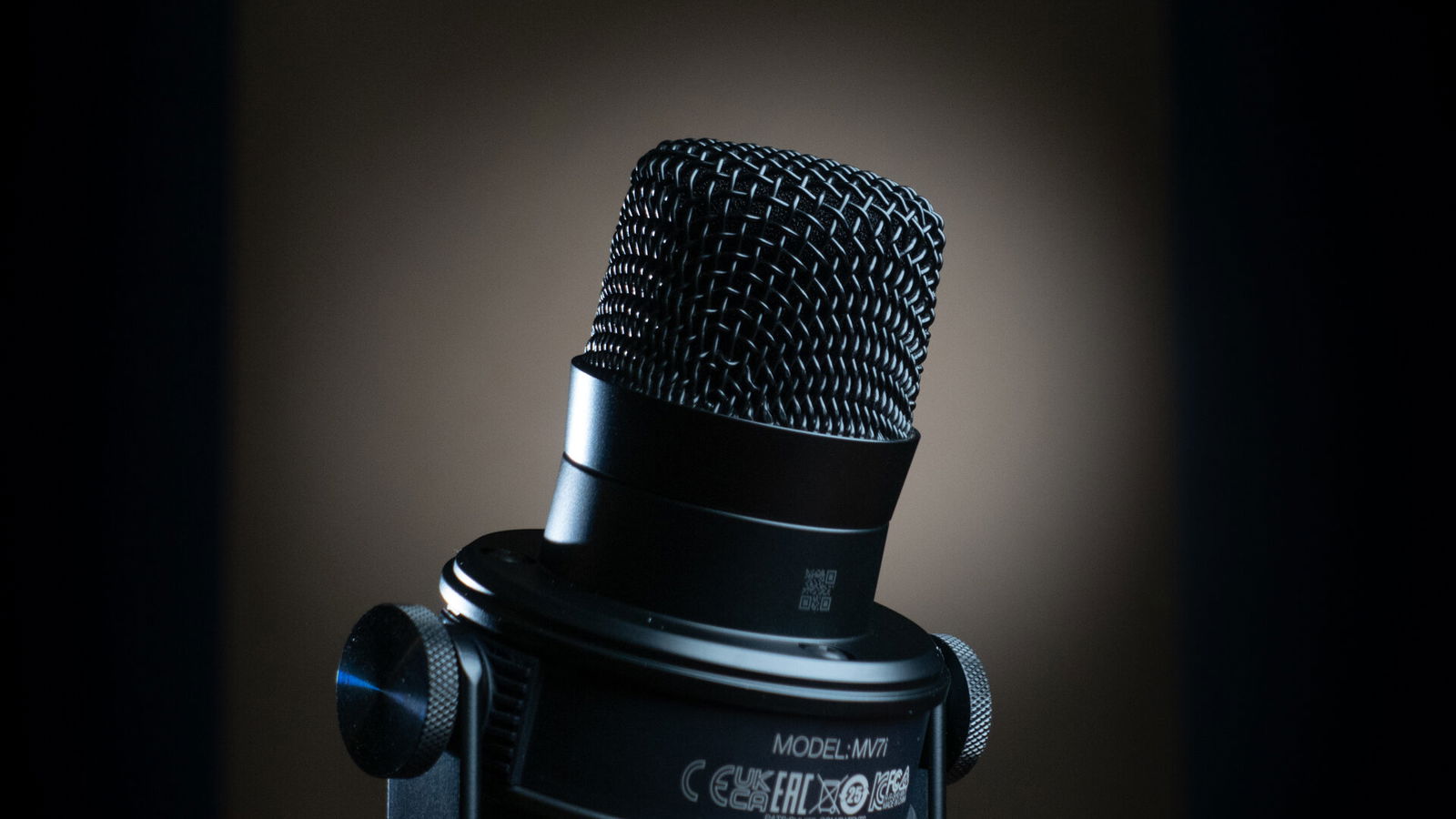
The MV7i is poised to shake up the industry, bridging the gap between USB microphones and the versatility of multi-track recorders. Whether you’re new to content creation or looking to upgrade your setup, the MV7i should be the mic at the top of your list.
